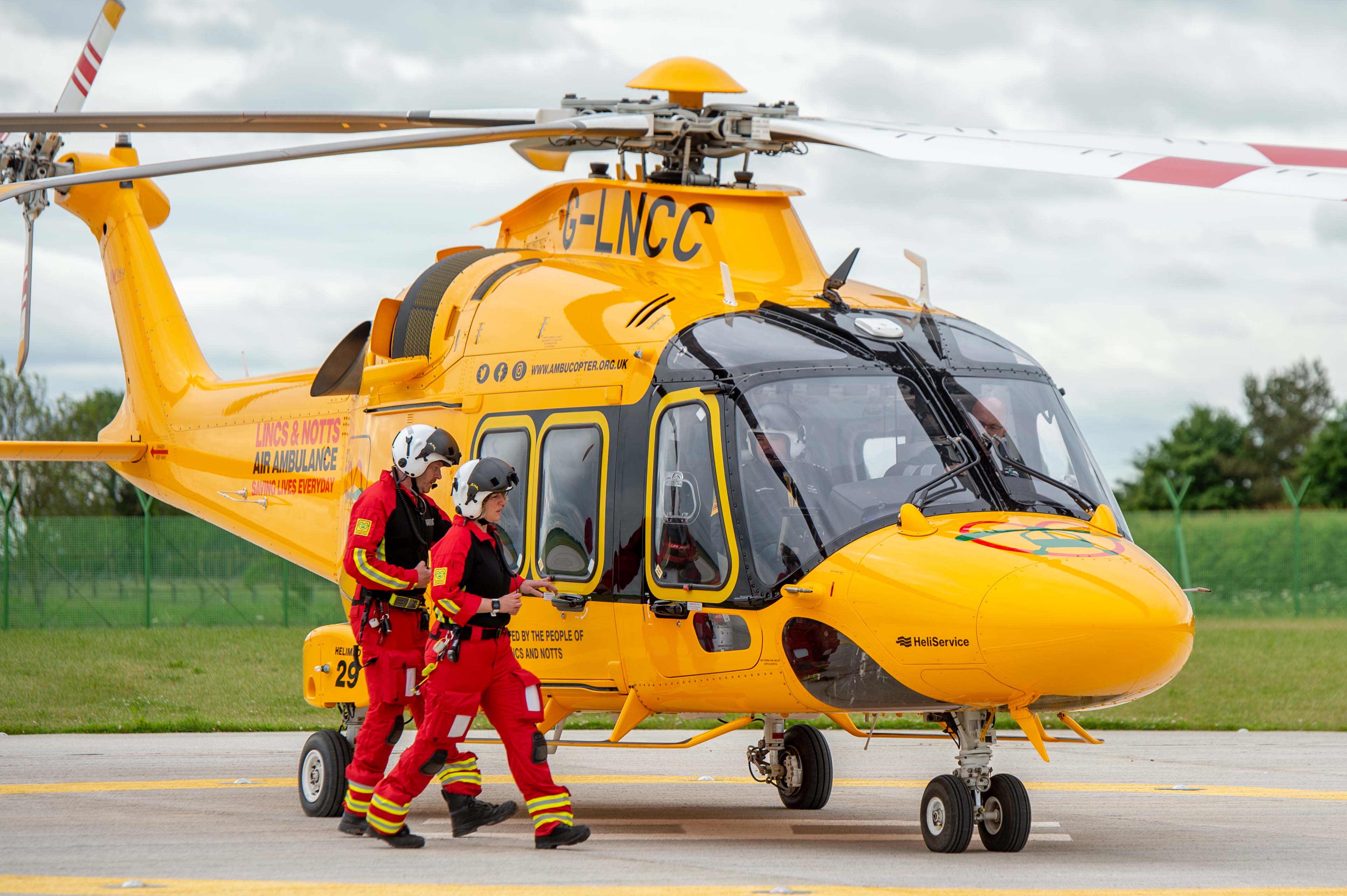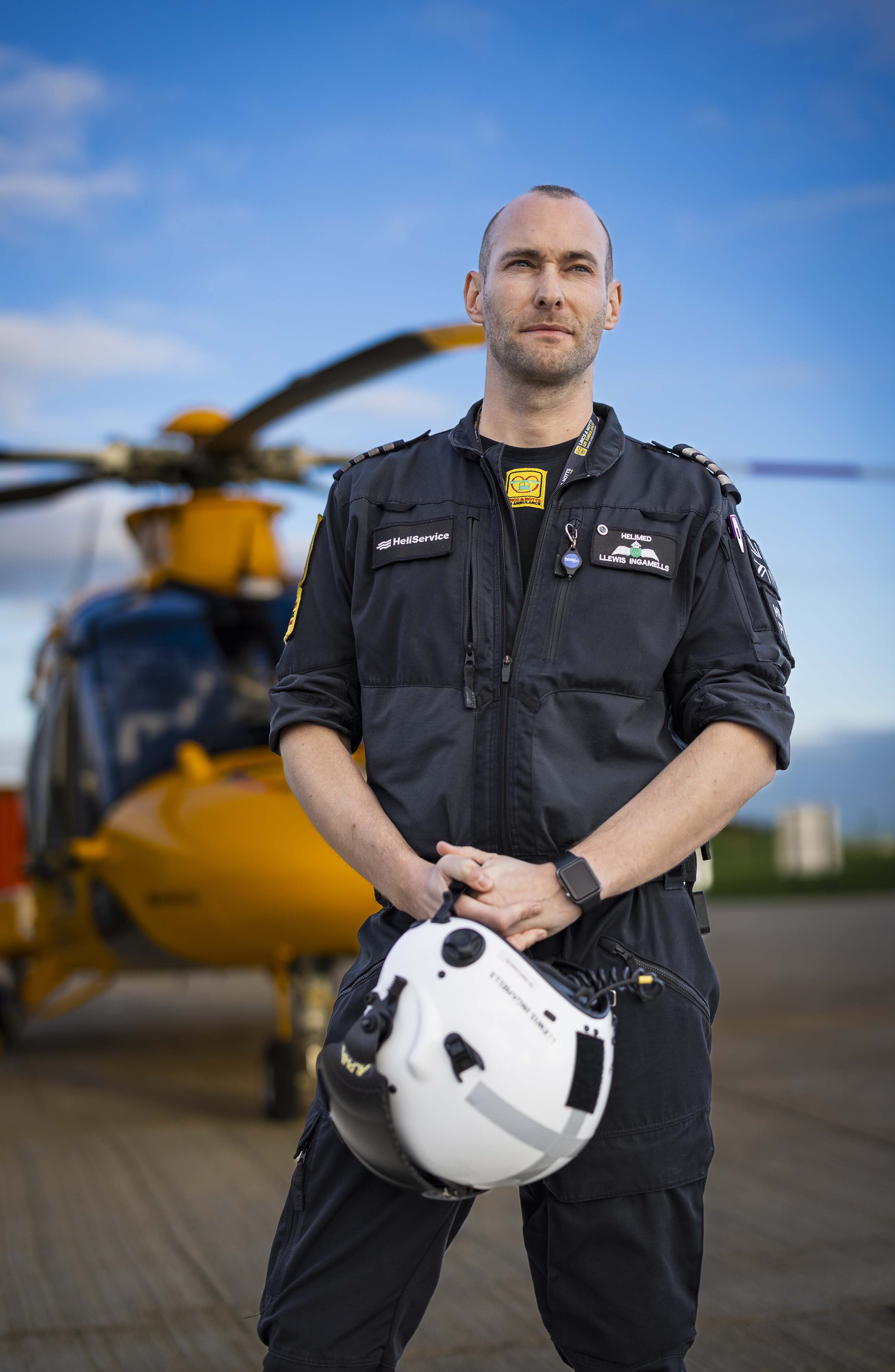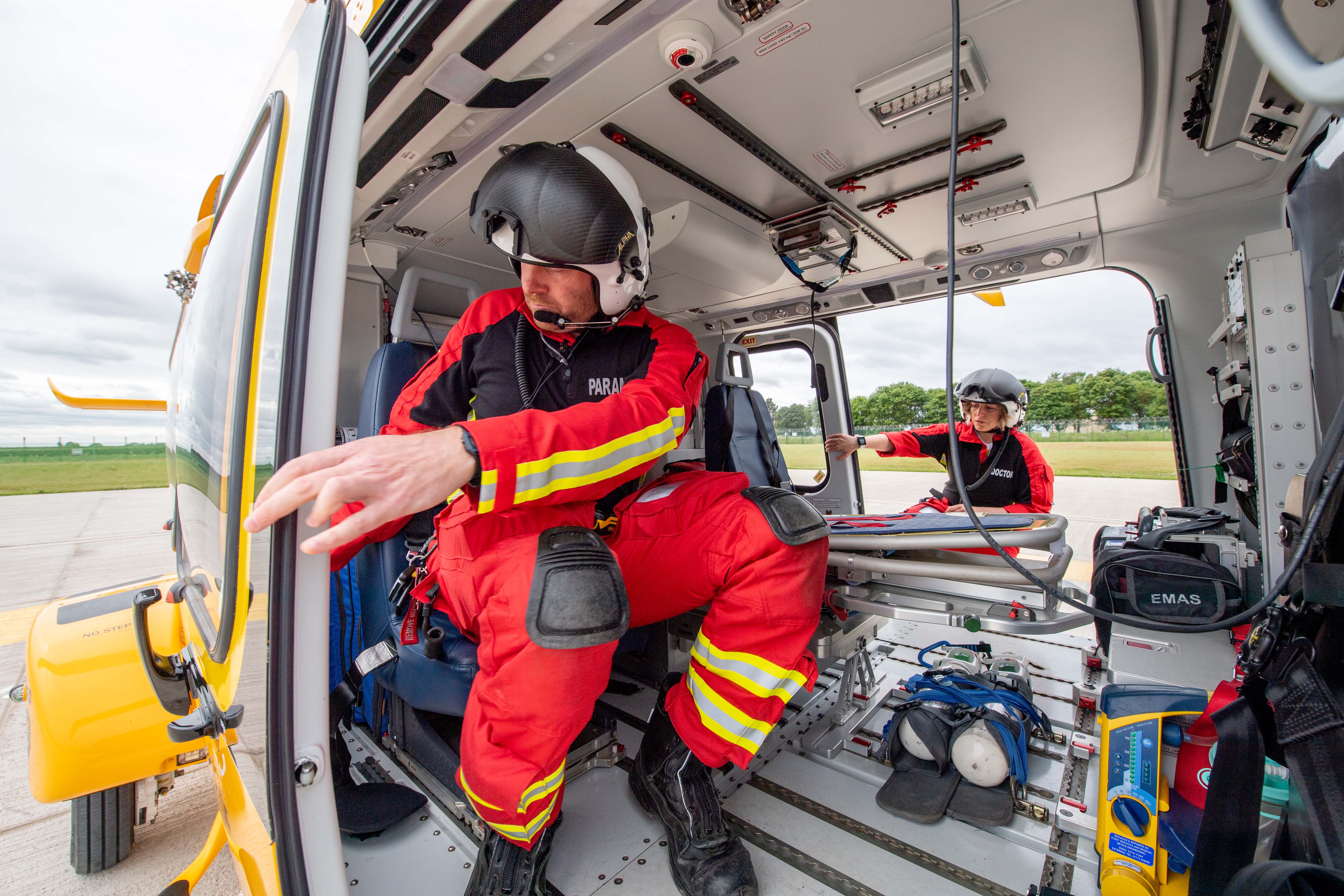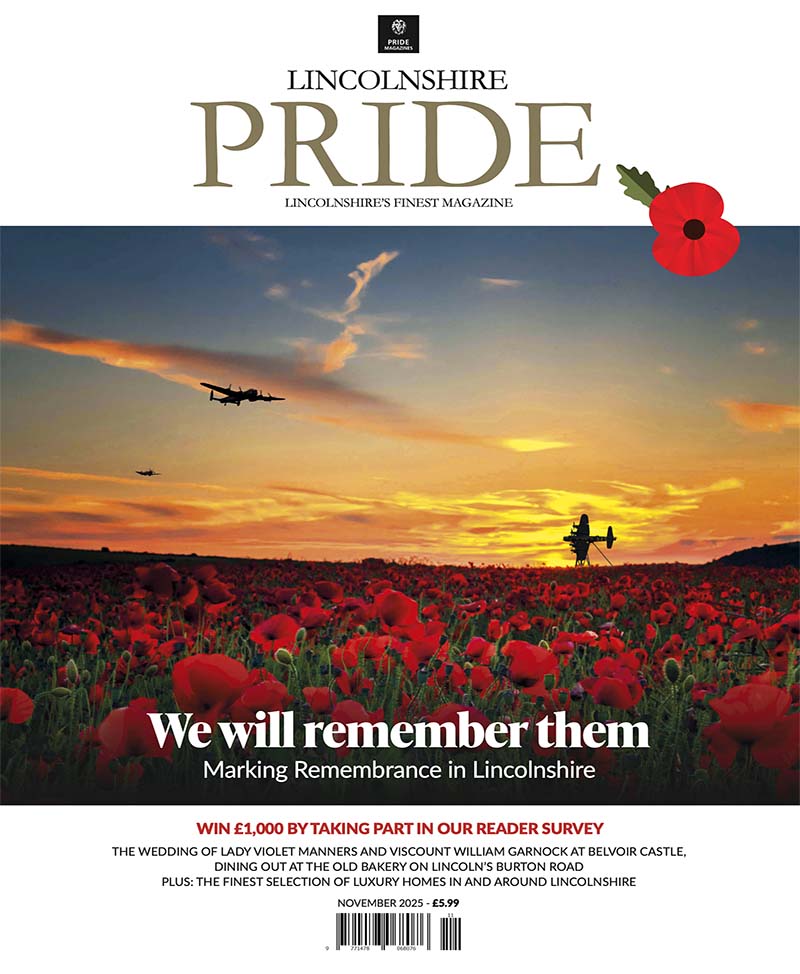
Saving Lives in the Air
Just before Christmas, the Lincs & Notts Air Ambulance confirmed that it had experienced its busiest year ever, responding to over 1,620 missions during the previous 12 months and providing 24/7 care via both road-going advanced paramedics and its air ambulance service, which is now flying a greater number of hours than ever thanks to its night-flying capabilities…

In 2022 the Lincs & Notts Air Ambulance (LNAA) confirmed that it had experienced its busiest year ever, responding to 1,620 potentially life-saving missions, delivering 24/7 care to patients across Lincolnshire by helicopter and critical care car. It was 30 missions more than the previous year and that number looks to further increase as the charity has expanded to being fully night flying capable.
All impressive achievements, underpinned by the reality that any one of us within the service’s 3,500m2 catchment area, could need the service to ensure the best chance of survival after incidents such as road traffic collisions, cardiac arrests and violent crime. Since its inception in 1994, the charity has flown more than 27,000 missions and saved the lives of people whose survival depended on the speedy arrival of the service.
Next year, LNAA will celebrate its 30th year and it is putting out the call for anyone who has been helped by the charity in the past to get in touch with their stories or simply to access support. Patient and Families Lead, Hayley Burton said: “We now have an aftercare service in which we can really help and support people affected by an incident they may have been involved in or are affected by.Where possible, we also arrange for former patients, their families and friends to come and see the crew, the helicopter and have the opportunity to ask any questions.”
Almost 30 years since the charity’s maiden voyage and with our communities grateful for the service, a few lesser understood facts about the service still persist… The charity needed £8m to operate last year but with the expansion into night flying and the vision to be by the side of more patients, that figure is set to rise. Each mission costs on average £4,000 and this is all made possible by the generosity of supporters who leave gifts in their Wills, play the LNAA lottery or make regular donations. Businesses and organisations are also tirelessly fundraising for the charity all year round.
Think about LNAA and the thing that comes to mind is the familiar sight of the yellow helicopter. But the charity also operates critical care cars in Lincolnshire and Nottinghamshire. These cars carry the same equipment as the helicopter giving the crew the same capabilities across both assets in being able to deliver blood transfusions, intubation or give anaesthetics.
Llewis Ingamells is Chief Pilot with the service, born and raised in Boston. Having trained as a pilot in Sandtoft in the mid-2000s he served as a commercial pilot for utility companies and an instructor before working as a pilot for the police. In 2016, his dream job came along… one he’d coveted since being a youngster. “I must have been about 13 years of age when I first met the Lincs & Notts Air Ambulance team at the Waddington Air Show,” he says. “I was awe-struck and that’s really what started my interest.
“Going back a number of years, the role of an air ambulance was a bit more ‘swoop and scoop.’ There was more of a focus on transporting a patient as soon as possible. The idea was that reaching, treating and delivering to hospital a patient within an hour would increase their chance of survival.”
While the speed of the helicopter remains highly important to a patient’s outcome, the team now focus on remaining at the scene for as long as it takes to deliver all of the treatments possible to save a life. The interventions the doctor and paramedic team carry out are at the forefront of emergency medicine. The charity is always looking to innovate so that it can keep getting to more patients, wherever they are. The service has extended the number of hours and weather conditions in which the helicopter can fly, with investment in night vision goggles. These, along with the capability of the aircraft, including a bright search light means the pilots can fly until 2am.
Llewis said: “What’s different about night flying is that the pilots need a’4D’ landing site which is four times the length of the helicopter and twice the width – just over half a football pitch! The daytime equivalent is 2D which is around one and a half tennis courts. Also at night, due to the pre-planning needed, it takes around 15 minutes from call to take off, whereas during the day it’s up to five minutes.”
“At night it’s very hard to see poor weather and avoid it. The HVGs can see through some poor weather but this can be a risk in itself as much as it can be of benefit. Operating on scene in the dark is also challenging for the medical team treating the patients.”
Llewis added: “We’re seeing people on the worst day of their lives, but when outcomes are favourable you come away knowing that everyone associated with the charity is committed to providing a service that’s one of the best in the country, and which helps to support our NHS colleagues. We’re all proud to be able to provide this service for our communities.”

Care in the Air: The Lincs & Notts Air Ambulance in Numbers…
£8 million: The current cost of funding to keep the service operational each year.
169: Thanks to its public support, the service uses an AgustaWestland 169 helicopter – a top of the range Helicopter Emergency Medical Service (HEMS) aircraft offering head to toe access to patients in flight. The crew also carry blood on board, allowing them to deliver potentially life-saving blood transfusions at the scene.
25,755: The number of missions the air ambulance has flown since the service began operating in 1994.
£4,000: The average cost of each mission.
24/7: LNAA provides a 24-hour service, seven days a week, enabling our clinical crew to give more people than ever the very best chance of survival. This level of care ensures it is at the forefront of Helicopter Emergency Medical Services in the UK.
3,500: The number of square miles that the service covers across Lincolnshire and Nottinghamshire.
2,500,000: The number of people the air ambulance provides medical support to across Lincolnshire and Nottinghamshire.
216mph: The aircraft can reach a top speed of 216mph and has a cruising speed of 180mph; more three times faster than a land ambulance.
20: The number of minutes it takes the air ambulance to reach the furthest point in its catchment area.
Four: The average number of callouts a day.
Ways to help keep your local Air Ambulance service flying…
Donations: The Lincs & Notts Air Ambulance does not receive any direct government or NHS funding and so without public donations, the service could not continue. You can donate by calling 01522 548469 or online at www.ambucopter.org.uk.
Play the Service’s Lottery: There’s £1,000 to win each week and up to £25,000 in the new Prizebuilder Game.
Volunteering & Fundraising: Whilst pilots and medics are frequently recognised in features like this one, there’s a small army of absolutely committed volunteers in the charity’s shops and those who raise money for the service through sponsored events and other activities. These less often-sung heroes are essential to the service.
Legacies, Trusts & Grants: Leaving a gift in your Will can make the difference to someone, somewhere in the counties of Lincolnshire and Nottinghamshire. Visit ambucopter.org.uk/wills for more information.
Keep in Touch: On Facebook @Ambucopter, or on Twitter @LNAACT.
Support Your Air Ambulance Service: The Lincs & Notts Air Ambulance service is based on HEMS Way, Sleaford Road, Waddington, Lincoln LN4 2GW. Call 01522 548469 or see www.ambucopter.org.uk.






